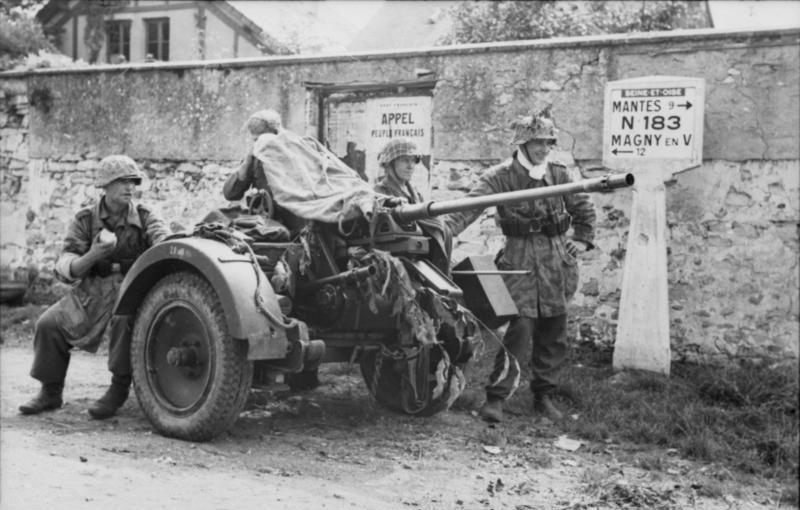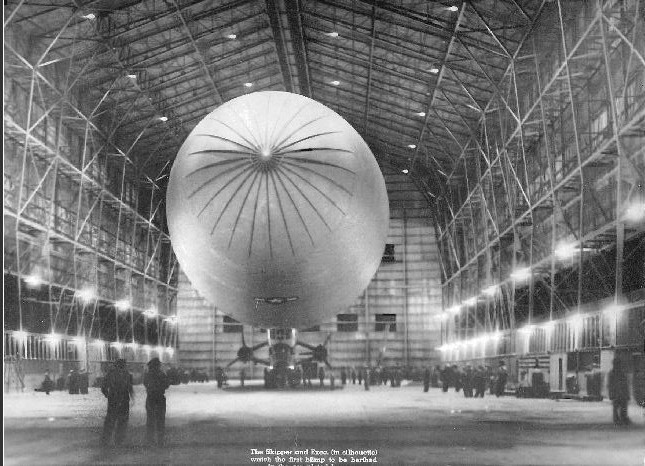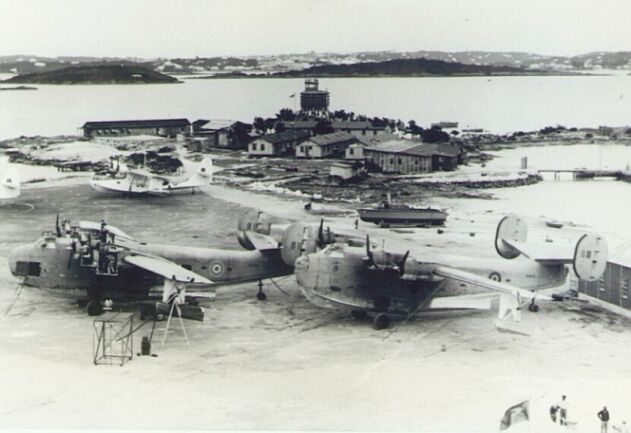|
VP-40 (1951-present)
VP-40 was a Patrol Squadron of the U.S. Navy. The squadron was established as Patrol Squadron 55 (VP-55) on 1 August 1940, redesignated Patrol Squadron 74 (VP-74) on 1 July 1941, redesignated Patrol Bombing Squadron 74 (VPB-74) on 1 October 1944, redesignated Patrol Squadron 74 (VP-74) on 15 May 1946, redesignated Medium Patrol Squadron (Seaplane) 10 (VP-MS-10) on 15 November 1946, redesignated Patrol Squadron 40 (VP-40) on 1 September 1948 and disestablished on 25 January 1950. Operational history *1 August 1940: VP-55 was established at NAS Norfolk, Virginia, under the administrative control of PatWing-5 as a seaplane patrol squadron destined for duty with the Neutrality Patrol. VP-55 and sister squadron VP-56 were ordered to provide aerial surveillance for the ships of the Support Force on the offshore patrol. The first aircraft flown by the squadron was an XPBM-1, the pre-production version of the Martin Mariner. Training on this aircraft was undertaken at the Glenn L. Ma ... [...More Info...] [...Related Items...] OR: [Wikipedia] [Google] [Baidu] |
Martin PBM Mariner
The Martin PBM Mariner was an American Maritime patrol aircraft, patrol bomber flying boat of World War II and the early Cold War era. It was designed to complement the Consolidated PBY Catalina and Consolidated PB2Y Coronado, PB2Y Coronado in service. A total of 1,366 PBMs were built, with the first example flying on 18 February 1939 and the type entering service in September 1940, with the last of the type being retired in 1964. Design and development In 1937 the Glenn L. Martin Company designed a new twin-engined flying boat, the Model 162, to succeed its earlier Consolidated P2Y, Martin P3M and complement the Consolidated PBY Catalina, PBY Catalina and Consolidated PB2Y Coronado, PB2Y Coronado. It received an order for a single prototype XPBM-1 on 30 June 1937.Swanborough and Bowers 1976, p. 318. This was followed by an initial Mass production, production order for 21 PBM-1 aircraft on 28 December 1937.Green 1968, p. 177. To test the PBM's layout, Martin built a ⅜ scale f ... [...More Info...] [...Related Items...] OR: [Wikipedia] [Google] [Baidu] |
Gardiners Bay
Gardiners Bay is a small arm of the Atlantic Ocean, approximately 10 mi (16 km) long and 8 mi (13 km) wide in the U.S. state of New York between the two flukelike peninsulas at the eastern end of Long Island. It is bounded on its eastern end, where it connects to Block Island Sound, by Gardiners Island and Promised Land. Adjoining harbors include Three Mile Harbor, Clearwater beach, Acabonack Harbor, and Lazy Point's Napeague harbor. Native fish include; Striped Bass, Bluefish, Fluke, Yellowtail, flounder, blackfish, weakfish, Porgy, sea Robbin, and sea skate. The area is fed by the nearby estuaries of Three mile Harbor, Acabonack Creek, and Napeague, which produce ideal environments for shellfish and crustaceans. Blue claw crab, oysters, and hard shell clams, scallops, and conch are abundant throughout these areas. It is bounded on the western end by Shelter Island. It connects by two channels at the north and south end of Shelter Island to Great Peconic B ... [...More Info...] [...Related Items...] OR: [Wikipedia] [Google] [Baidu] |
2 Cm Flak 30/38/Flakvierling
The Flak 30 (''Flugzeugabwehrkanone 30'') and improved Flak 38 were 20 mm anti-aircraft guns used by various German forces throughout World War II. It was not only the primary German light anti-aircraft gun but by far the most numerously produced German artillery piece throughout the war. It was produced in a variety of models, notably the Flakvierling 38 which combined four Flak 38 autocannons onto a single carriage. Development The Germans fielded the unrelated early 2 cm Flak 28 just after World War I, but the Treaty of Versailles outlawed these weapons and they were sold to Switzerland. The original Flak 30 design was developed from the Solothurn ST-5 as a project for the Kriegsmarine, which produced the 20 mm C/30. The gun fired the "Long Solothurn", a 20 × 138 mm belted cartridge that had been developed for the ST-5 and was one of the more powerful 20 mm rounds. The C/30, featuring a barrel length of 65 calibres, had a fire rate of about ... [...More Info...] [...Related Items...] OR: [Wikipedia] [Google] [Baidu] |
U-boat
U-boats were naval submarines operated by Germany, particularly in the First and Second World Wars. Although at times they were efficient fleet weapons against enemy naval warships, they were most effectively used in an economic warfare role (commerce raiding) and enforcing a naval blockade against enemy shipping. The primary targets of the U-boat campaigns in both wars were the merchant convoys bringing supplies from Canada and other parts of the British Empire, and from the United States, to the United Kingdom and (during the Second World War) to the Soviet Union and the Allied territories in the Mediterranean. German submarines also destroyed Brazilian merchant ships during World War II, causing Brazil to declare war on both Germany and Italy on 22 August 1942. The term is an anglicised version of the German word ''U-Boot'' , a shortening of ''Unterseeboot'' ('under-sea-boat'), though the German term refers to any submarine. Austro-Hungarian Navy submarines were also kno ... [...More Info...] [...Related Items...] OR: [Wikipedia] [Google] [Baidu] |
Augusto Severo International Airport
Augusto Severo International Airport ( pt, Aeroporto Internacional Augusto Severo) , formerly called Parnamirim Airport, was the airport that served Natal, Brazil, located in the adjoining municipality of Parnamirim. On May 31, 2014, all domestic and international flights were moved to the new Gov. Aluízio Alves International Airport, and Augusto Severo was closed to civil aviation. Some of its facilities were shared with the Natal Air Force Base of the Brazilian Air Force. From 24 November 1951, the airport was named after the aviator Augusto Severo de Albuquerque Maranhão (1864-1902). History Before World War II Air France operated a mail service with flying boats and landplanes across the Atlantic from Dakar which routed via Natal. Parnamirim was a combination land and marine airport also used by Pan American World Airways and Panair do Brasil flying boats. In 1940 and 1941 the Italian Airline L.A.T.I. operated a weekly landplane service from Rome to Rio de Janeiro via R ... [...More Info...] [...Related Items...] OR: [Wikipedia] [Google] [Baidu] |
Carlsen Air Force Base
Carlsen Air Force Base is a former United States Army Air Forces World War II airbase on Trinidad, consisting of two landing strips, "Edinburgh" and "Xeres". The airbase also included an emergency landing strip, "Tobago". History The American rights to the airfield and Naval Base Trinidad were obtained via the Destroyers for Bases Agreement in September 1940 when the United States transferred fifty destroyers to Great Britain in exchange for Army and Navy base rights on British possessions in the Americas. Opened in 1942, Edinburgh Field had been intended solely as an overflow facility for Air Transport Command transport aircraft headed for nearby Waller Field, but eventually, it grew into an enormous sprawling complex with three parallel paved runways – 5000 x 150 ft / 5000 x 150 ft / 2000 x 300 ft and an Airship operating area that made it physically larger than all the other airbases in Trinidad, being used by both Army and Navy aircraft. Edinburgh Field ... [...More Info...] [...Related Items...] OR: [Wikipedia] [Google] [Baidu] |
Roosevelt Roads Naval Station
Roosevelt Roads Naval Station is a former United States Navy base in the town of Ceiba, Puerto Rico. The site operates today as José Aponte de la Torre Airport, a public use airport. History In 1919, future US President Franklin D. Roosevelt, then Assistant Secretary of the Navy, toured Puerto Rico, visiting Ceiba. When he returned to the White House, he expressed a liking for the terrain where the base was to be located. This was during the World War I era, and the US could benefit from an air field in Ceiba. While Puerto Rico is a Commonwealth, its territorial rights belong to the US, which made it feasible for the US government to build an air base in Ceiba. It took many years for the US to become convinced of the need for an air base in Ceiba. When Adolf Hitler and Nazi Germany began to invade other European countries, the US, led by then President Roosevelt, considered the idea of a naval air station in Ceiba. With war in the European and Pacific theatres, they saw an ... [...More Info...] [...Related Items...] OR: [Wikipedia] [Google] [Baidu] |
German Submarine U-158 (1941)
German submarine ''U-158'' was a Type IXC U-boat of Nazi Germany's ''Kriegsmarine'' built for service during World War II. Her keel was laid down on 1 November 1940 by DeSchiMAG AG Weser in Bremen as yard number 1000. She was commissioned on 25 September 1941, with ''Kapitänleutnant'' Erwin Rostin (Knights Cross) in command. Design German Type IXC submarines were slightly larger than the original Type IXBs. ''U-158'' had a displacement of when at the surface and while submerged. The U-boat had a total length of , a pressure hull length of , a beam of , a height of , and a draught of . The submarine was powered by two MAN M 9 V 40/46 supercharged four-stroke, nine-cylinder diesel engines producing a total of for use while surfaced, two Siemens-Schuckert 2 GU 345/34 double-acting electric motors producing a total of for use while submerged. She had two shafts and two propellers. The boat was capable of operating at depths of up to . The submarine had a maximum sur ... [...More Info...] [...Related Items...] OR: [Wikipedia] [Google] [Baidu] |
Anti-submarine Warfare
Anti-submarine warfare (ASW, or in older form A/S) is a branch of underwater warfare that uses surface warships, aircraft, submarines, or other platforms, to find, track, and deter, damage, or destroy enemy submarines. Such operations are typically carried out to protect friendly shipping and coastal facilities from submarine attacks and to overcome blockades. Successful ASW operations typically involved a combination of sensor and weapon technologies, along with effective deployment strategies and sufficiently trained personnel. Typically, sophisticated sonar equipment is used for first detecting, then classifying, locating, and tracking a target submarine. Sensors are therefore a key element of ASW. Common weapons for attacking submarines include torpedoes and naval mines, which can both be launched from an array of air, surface, and underwater platforms. ASW capabilities are often considered of significant strategic importance, particularly following provocative instan ... [...More Info...] [...Related Items...] OR: [Wikipedia] [Google] [Baidu] |
NAS King’s Point
Nas (born 1973) is the stage name of American rapper Nasir Jones. Nas, NaS, or NAS may also refer to: Aviation * Nasair, a low-cost airline carrier and subsidiary based in Eritrea * National Air Services, an airline in Saudi Arabia ** Nas Air (Saudi Arabia), a low-cost airline carrier and subsidiary of National Air Services * National Airports System, an organization system of larger or important airports in Canada * National Airspace System, an aviation control system in the United States * Naval air squadron, an aircraft-focused unit associated with a navy * Naval air station, a military air base associated with a navy * Norwegian Air Shuttle, an airline in Norway * National Aviation Services, an aviation services provider headquartered in Kuwait Commerce * Nihon Ad Systems, a Japanese anime company * No age statement, for a Scotch whisky Organizations * Nationaal Arbeids-Secretariaat, a trade union federation in the Netherlands 1893-1940 * National Academy of Songwriters * N ... [...More Info...] [...Related Items...] OR: [Wikipedia] [Google] [Baidu] |
Darrell's Island, Bermuda
Darrell's Island is a small island within the Great Sound of Bermuda. It lies in the southeast of the sound, and is in the north of Warwick Parish. The island is owned by the Bermuda Government. Early history The 1621 version of Richard Norwood's map of Bermuda shows Darrell's Island at that time appears to have been called ''Captain Tucker's Island'' (''"Ca. Turker Iland"'') presumably for Captain Daniel Tucker (Governor of Bermuda from 1616 to 1619). What is now known as Hinson's Island is shown on the same map as Darrell's Island (''"Dorrel Iland"''). The islands of the Great Sound were part of the Royal Naval land purchases in Bermuda following the American War of Independence. The Royal Navy used the islands for various purposes in the 19th century. Darrell's Island was also used as a quarantine station. During the Second Boer War, it was used (along with several of its neighbours) as a prisoner of war camp. Modern history In 1936, Imperial Airways built an air statio ... [...More Info...] [...Related Items...] OR: [Wikipedia] [Google] [Baidu] |
VPB-125
VPB-125 was a Patrol Bombing Squadron of the U.S. Navy. The squadron was established as Patrol Squadron 20 (VP-20) on 1 September 1938, redesignated Patrol Squadron 44 (VP-44) on 1 July 1940, redesignated Patrol Squadron 61 (VP-61) on 6 January 1941, redesignated Patrol Squadron 82 (VP-82) on 1 July 1941, redesignated Bombing Squadron 125 (VB-125) on 1 March 1943, redesignated Patrol Bombing Squadron 125 (VPB-125) on 1 October 1944 and disestablished on 8 June 1945. Operational history *1 September 1938: VP-20 was established at NAS Seattle, Washington, flying the P2Y-3 seaplane, under operational control of PatWing-4. *January 1940: The squadron deployed a detachment to Sitka, Alaska, to test new wing deicers. During the testing, tender support was provided by . *6 January 1941: The squadron was redesignated VP-61 and transferred to NAS Alameda, California, under operational control of PatWing-6. *1 June 1941: The squadron was transferred to NAS Norfolk, Virginia, the last plan ... [...More Info...] [...Related Items...] OR: [Wikipedia] [Google] [Baidu] |




_1997.jpg)


